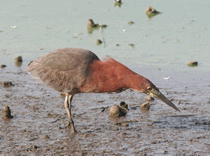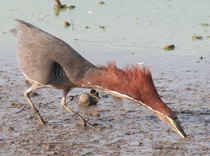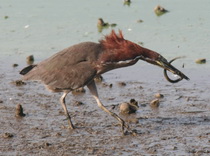The Rufescent Tiger-Heron is a resident bird at the reserve and lives together with other resident herons: Great Egret, Snowy Egret, White-necked Heron and Black-crowned Night-Heron. It is rather big, more than 60 cm tall. The long neck adopts the classical S shape of herons, though sometimes it may be hidden below its "mane". Its aspect changes radically if the neck is coiled or stretched. It is a solitary bird. It may be discovered in the grassland, where it conceals easily in the vegetation, exposed on the bank of the pond, or up in the trees, where it nests. It does not withstand human presence nearby. So, if it feels threatened it flies away. It hunts during the day and its diet is very varied: fish, eels, frogs, small mammals.
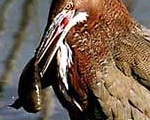 © Julio Schindler © Julio Schindler
|
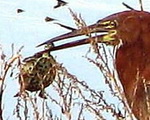 © Rosana Rodriguez © Rosana Rodriguez
|
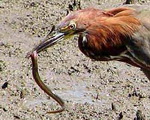 © Hugo Hulsberg © Hugo Hulsberg
|
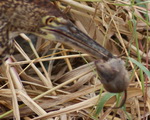 © C. y T. Di Mauro © C. y T. Di Mauro
|
| From left to right: With Australoherus facetum, turtle, eel and rat. The Tiger-Heron of the last photo is a juvenile. | |||
|---|---|---|---|
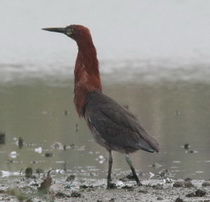 |
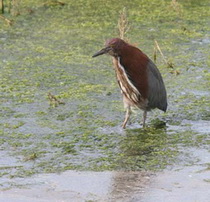 |
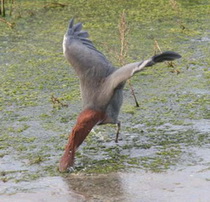 |
| Left: Stalking with the bill in horizontal position. Motionless it waits for the prey, it locates it and "uncoils" its folded neck for the strike. Photos 2006 © Roberto Ares | ||
|---|---|---|
The Tiger-Heron captures the prey with the bill tip and paralizes it with a shake, so that it will not offer resistence. Then it moves it from the bill tip to the mouth to swallow it whole. It uses the tongue to secure it. When the prey is in the base of the bill, some muscles expand the gular region so that the passes through the esophagus. The Tiger-Heron stretches the neck to ease the prey down and if there is water available, a little sip is always welcome.
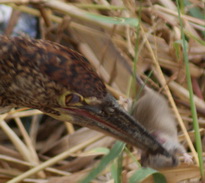 |
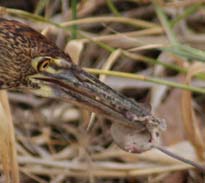 |
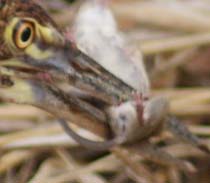 |
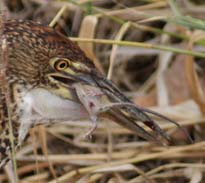 |
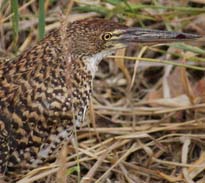 |
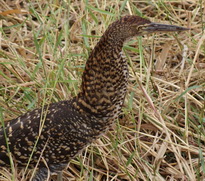 |
| This juvenile Tiger-Heron has a rat in its bill tip. With some head shakes the Tiger-Heron paralizes it and moves it to the throat manipulating it with the tongue.
In the first photo of the second line the expansion of the gular region can be appreaciated. Once swallowed, the expansion of the esophagus. Photos 2009 © Claudia y Tito Di Mauro |
||
|---|---|---|
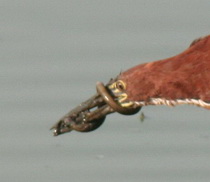 |
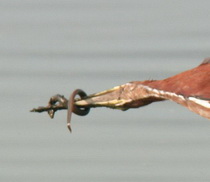 |
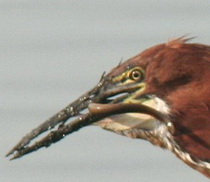 |
| This wriggling eel did not give up so easily. The Tiger-Heron had to contend with it before subduing it. In the last photo it may be observed how the tongue secures the prey by adopting a convex-like form, which reaches the upper mandible.
The gif animation shows the eel being swallowed and the little sip at the very end. View animation Photos 2006 © Roberto Ares |
||


